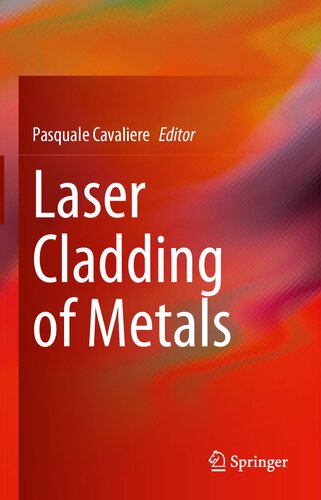

Most ebook files are in PDF format, so you can easily read them using various software such as Foxit Reader or directly on the Google Chrome browser.
Some ebook files are released by publishers in other formats such as .awz, .mobi, .epub, .fb2, etc. You may need to install specific software to read these formats on mobile/PC, such as Calibre.
Please read the tutorial at this link: https://ebookbell.com/faq
We offer FREE conversion to the popular formats you request; however, this may take some time. Therefore, right after payment, please email us, and we will try to provide the service as quickly as possible.
For some exceptional file formats or broken links (if any), please refrain from opening any disputes. Instead, email us first, and we will try to assist within a maximum of 6 hours.
EbookBell Team

5.0
100 reviewsLaser cladding is an additive manufacturing technology capable of producing coatings due to the surface fusion of metals. The selected powder is fed into a focused laser beam to be melted and deposited as coating. This allows to apply material in a selected way onto those required sections of complex components. The process main properties are the production of a perfect metallurgically bonded and fully dense coatings; the minimal heat affected zone and low dilution between the substrate and filler material resulting in functional coatings that perform at reduced thickness, so fewer layers are applied; fine, homogeneous microstructure resulting from the rapid solidification rate that promotes wear resistance of carbide coatings; near net-shape weld build-up requires little finishing effort; extended weldability of sensitive materials like carbon-rich steels or nickel-based superalloys that are difficult or even impossible to weld using conventional welding processes; post-weld heat treatment is often eliminated as the small heat affected zone minimizes component stress; excellent process stability and reproducibility because it is numerical controlled welding process. The typical applications are the dimensional restoration; the wear and corrosion protection; additive manufacturing.
The wide range of materials that can be deposited and its suitability for treating small areas make laser cladding particularly appropriate to tailor surface properties to local service requirements and it opens up a new perspective for surface engineered materials. The main key aspect to be scientifically and technologically explored are the type of laser; the powders properties; the processing parameters; the consequent microstructural and mechanical properties of the processed material; the capability of fabrication of prototypes to rapid tooling and rapid manufacturing.